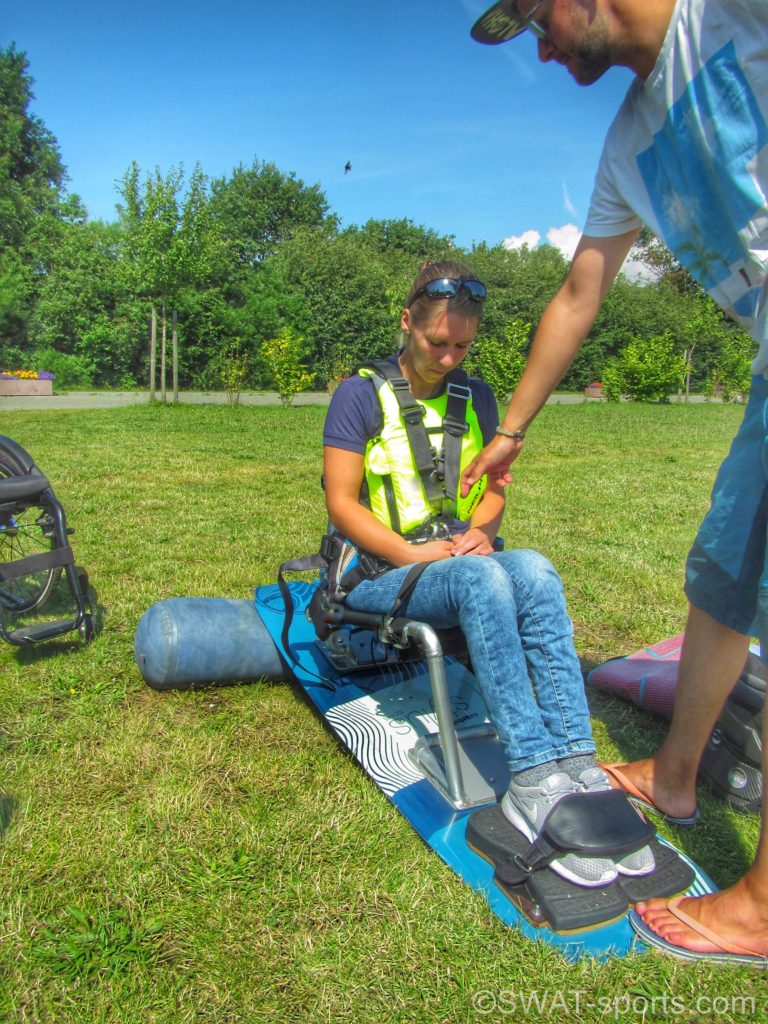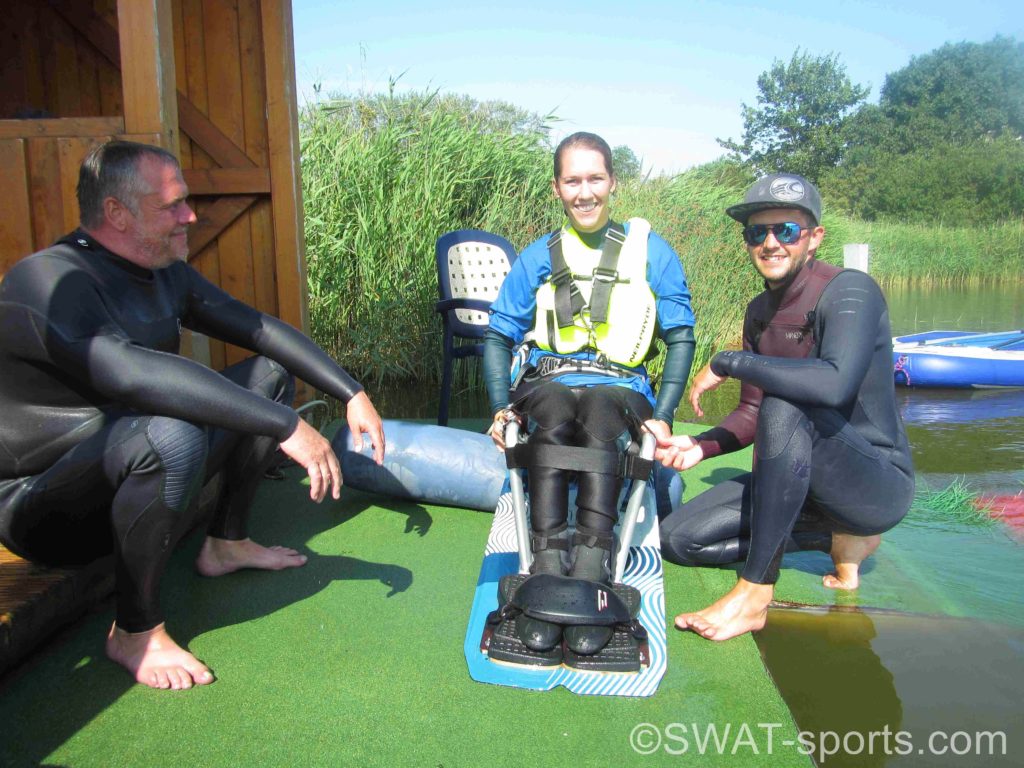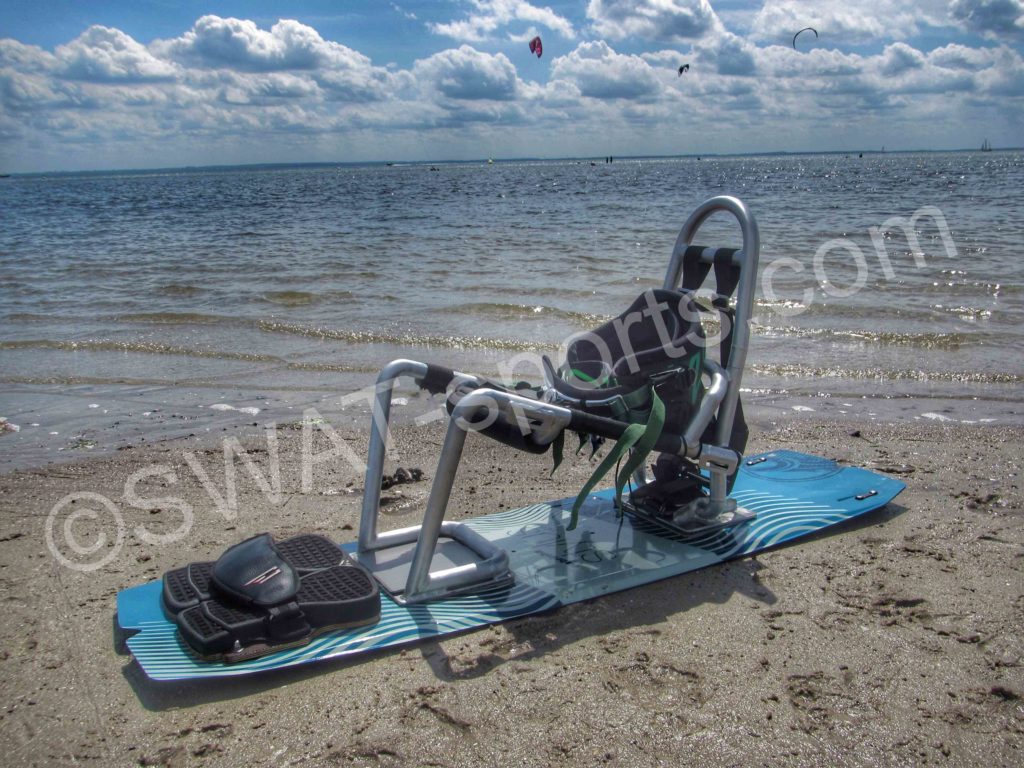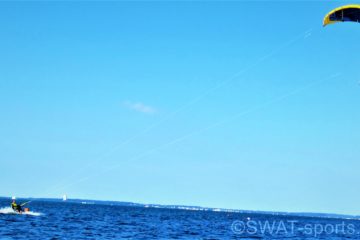Time and time again we are being asked these and similar questions and with this post we want to show you which skills one actually needs to learn sitkiteing.
First of all, sitkiteing differs from regular kitesurfing only marginally. Though there are some tricks and refinements one should consider while learning sitkiting, in the end it is and remains kitesurfing.
We as kiteboardingmedicals, want to give you the utmost safety with that and especially make a point of teaching you sitkiteing and foremost kite-control in a manner, so you know in every situation what the kite is doing or rather what you have to do to manage potential difficulties. In particular reliable kite-control is of extreme importance here and is being attached great value to by SWAT-sports, too.
Sitkiteing (and kitesurfing while standing) is learned more easily, if the next step is done at the right time. It’s no use to try waterstart if one just barely keeps the kite in the sky (in a controlled manner) (sadly we do see that oftentimes in kitesurfing training sessions).
One is supposed to be able to fly the kite virtually blind (in the beginning of one‘s kitesurfing-carreer hard to believe, but at some point, one starts to feel the kite and does not need to look up at all times), because then you can completely focus on the SWAT-Board and the driving experience, which does not only increase the sport’s enjoyment but in particular the learning progress and safety.
All of that sounds really nice, but…

Which requirements or skills should one bring to the table as a soon-to-be sitkiter?
First, it is very important not to be afraid of water and to have a certain basic physical fitness. There is no lack of flushed paranasal sinuses and the one or the other gulp of (salt-)water in anyone‘s kitesurfing-carreer, they are just part of the deal. Just as important: although on the SWAT-Board, one is equipped with life jacket and wetsuit, one has got to be a reasonably good swimmer or rather needs to be able to control one’s position in the water.
As we kitesurfers do require stronger winds as other „windsport entrepreneurs“ to have fun, we oftentimes are exposed to a rather stiff breeze (except when foiling, but that’s for another time).
For non-kitesurfers, strong wind does bring more disadvantages than fun. Sand (flying) everywhere, quick cooling down (windchill), loud wind noises etc.. One just feels the forces of nature, which on the one hand defines this sport’s appeal but on the other hand also can be intimidating, especially in the beginning. But the advantage of a kitesurfer is to be able to adapt oneself to the wind situation at hand. Kite-sizes ranging form 4 to 19 squaremeters (and more) allow us always to prepare the right and foremost safe kite-size.
Step-by-step, you will learn a „sense“ for the wind, an eye for the water, the right handling of the material, safety measures and much more with us.
Well now, but is there something special about sitkiteing with the SWAT-Board?
In the planning phase of our SWAT-Board it was very important for us, that the seat would be adjustable to as many sportswomen/men as possible. We deliberately chose a seat with a lower center of gravity and an adaptive backrest inclusive of a belt system. The advantages resulting of that not only are a simplified learning process of sitkiting but also as said before, that we are able to adjust the seat to different body constitutions and extent of paraplegia.
But best convince yourselves and swing by!
We hope, now you have a better picture of what’s in store for you as a soon-to-be sitkiter!
But should you still have more questions or if there are other topics that are important to you and that we should elaborate on in detail, we would be happy for you to contact us!!
So long! See you on the water.
Your kiteboardingmedicals



